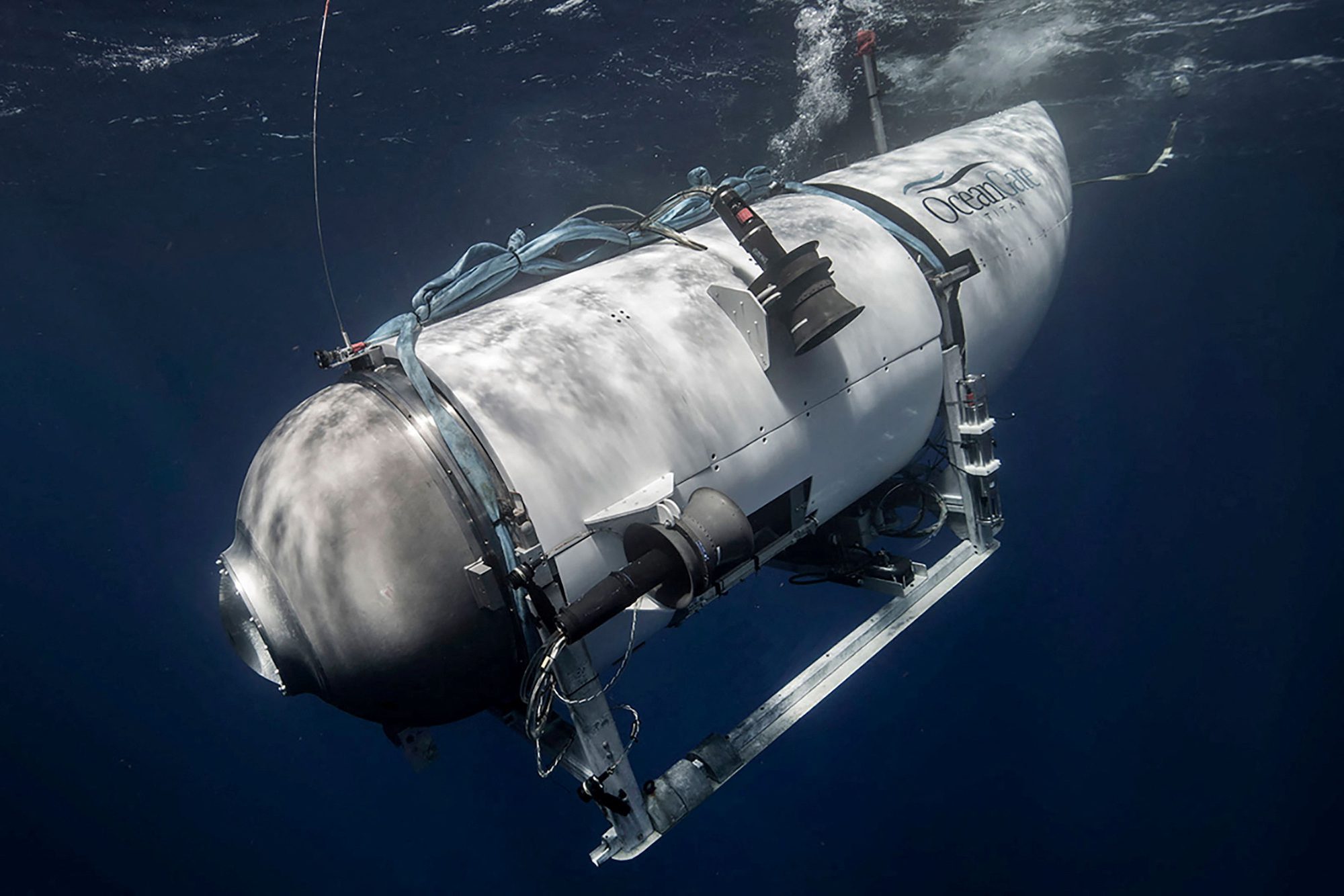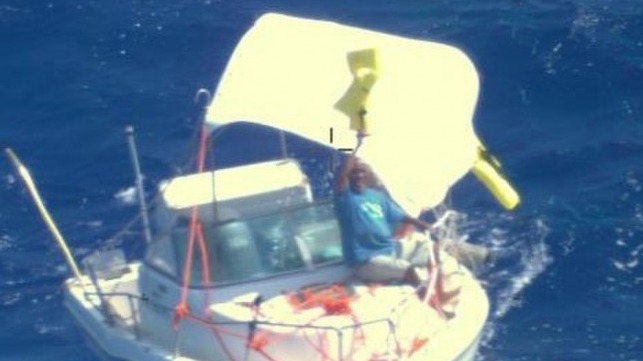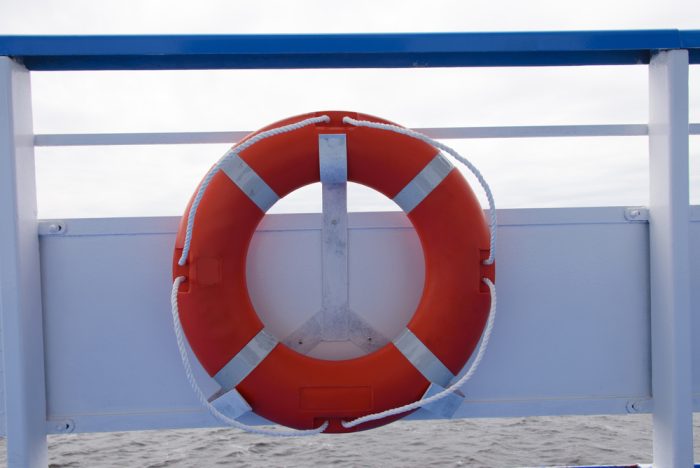Very interesting read, thank you
NYC Explorers Club Used Global Reach For Doomed Titan Rescue
By Amanda Gordon and Guillermo Molero (Bloomberg) –When word reached the Explorers Club that the Titan submersible had gone missing — with two of its members on board — the venerable...gcaptain.com
You are using an out of date browser. It may not display this or other websites correctly.
You should upgrade or use an alternative browser.
You should upgrade or use an alternative browser.
Titanic tourist sub goes missing sparking search
- Thread starter Fastmarc
- Start date
Please register or login
Welcome to ScubaBoard, the world's largest scuba diving community. Registration is not required to read the forums, but we encourage you to join. Joining has its benefits and enables you to participate in the discussions.
Benefits of registering include
- Ability to post and comment on topics and discussions.
- A Free photo gallery to share your dive photos with the world.
- You can make this box go away
Fired on the spot and I can only imagine that maybe threatened by their attorneys to keep his mouth shut.
Indeed, that is one of the scenarios that hasn't been well-tested through offshore applications.I'm just thinking of all sorts of new ways that things can go wrong...
Let me try and put thoughts into words. Microscopic air passage (microcrack as you refer to them). Add pressurized water. The air compresses to a dead end at the end of the passage. The water finally hits a bit of cement mix and it seals the passage. Surface, lose the outside pressure. Now there is a pocket of highly compressed air sealed inside concrete. Now the concrete around that pocket is under severe tensile stress as the air is pushing out. Concrete isn't the greatest at tensile. That's not the end of it either. Salt water now trapped in that passage. A very slow drying out as the water eventually leaves but the salt crystals stay behind.
So fibers are still needed, even if the load is all-compressive, to keep cracks from growing above the size that can be bridged by the chemical reaction. If the amount of trapped air and salt is small enough, it just stays as minor imperfections. There's also a number of special measures, such as curing in steam or under pressure, that reduce crack growth; not home build tech of course.
Not saying it's a miracle material. But as far as new underwater material research goes, it appears to be a more promising direction than epoxy composites. You don't have to get the lightest weight possible, just light enough to be neutrally buoyant with ballast and hardware. From there on, it's about reliability and long-term behavior, where concrete has a better track record than CFRP.
Penetrations are a definite problem for both, they have to be pre-planned on any composite hull. CFRP gets damaged beyond the hole area if drilled, UHPC requires embedding the metal parts before curing. But there's a lot of experience from submarines and offshore to count on. OceanGate might have saved on expertise in there...
Still Kicking
Contributor
Thank god there are so many rich individuals willing to give their time, money and expertise to help other rich individuals. It's really heartwarming.
NYC Explorers Club Used Global Reach For Doomed Titan Rescue
By Amanda Gordon and Guillermo Molero (Bloomberg) –When word reached the Explorers Club that the Titan submersible had gone missing — with two of its members on board — the venerable...gcaptain.com
Wookie
Proud to be a Chaos Muppet
Staff member
ScubaBoard Business Sponsor
ScubaBoard Supporter
Scuba Instructor
I know many members of the Explorers Club.Thank god there are so many rich individuals willing to give their time, money and expertise to help other rich individuals. It's really heartwarming.
They are decidedly not rich.
Many of the expedition sponsors are.
Are you saying that you know that the sponsors didn’t give for other causes as well?Thank god there are so many rich individuals willing to give their time, money and expertise to help other rich individuals. It's really heartwarming.
Thank god there are so many rich individuals willing to give their time, money and expertise to help other rich individuals. It's really heartwarming.
I read that they were trying to lobby the US government to give OUR money to help them. As most of their efforts seemed to be centered around having the Biden and Trudeau administrations to send resources.
A non-US flagged vessel that didn’t depart from a US port out in international waters.
Russjstewart
Contributor
In the interests of fair and accurate reporting a quick google search has brought up numerous examples of USCG long range rescuesVery interesting read, thank you

Coast Guard conducts long range rescue - The Cordova Times
U.S. Coast Guard rescue crews medevaced an injured fisherman from the F/V Baranof, 300 miles northwest of St. Paul Island, on Monday, June 1, and delivered him to St Paul for further transport to medical services in Anchorage.
 www.thecordovatimes.com
www.thecordovatimes.com

USCG, Navy Rescue Two After Long-Range Search in Western Pacific
After an all-out search effort in the far-flung waters of the Western Pacific, the U.S. Coast Guard...

Merchant tanker rescues rower in the South Pacific
On 16th June, a merchant tanker rescued a long-distance rower who had been adrift for three weeks in a life
 safety4sea.com
safety4sea.com

Sailors Are Rescued After 10 Days Adrift in the Atlantic
Joe DiTomasso and Kevin Hyde were sailing to Florida from New Jersey when they lost contact with family and friends on Dec. 3. On Tuesday, they were found more than 200 miles off the coast of Delaware.
Wookie
Proud to be a Chaos Muppet
Staff member
ScubaBoard Business Sponsor
ScubaBoard Supporter
Scuba Instructor
I would not want to set a precedent of the CG not attempting/performing rescues of adventurers who get in over their heads. Someday I might be the one who planned piss poorly.I read that they were trying to lobby the US government to give OUR money to help them. As most of their efforts seemed to be centered around having the Biden and Trudeau administrations to send resources.
A non-US flagged vessel that didn’t depart from a US port out in international waters.



